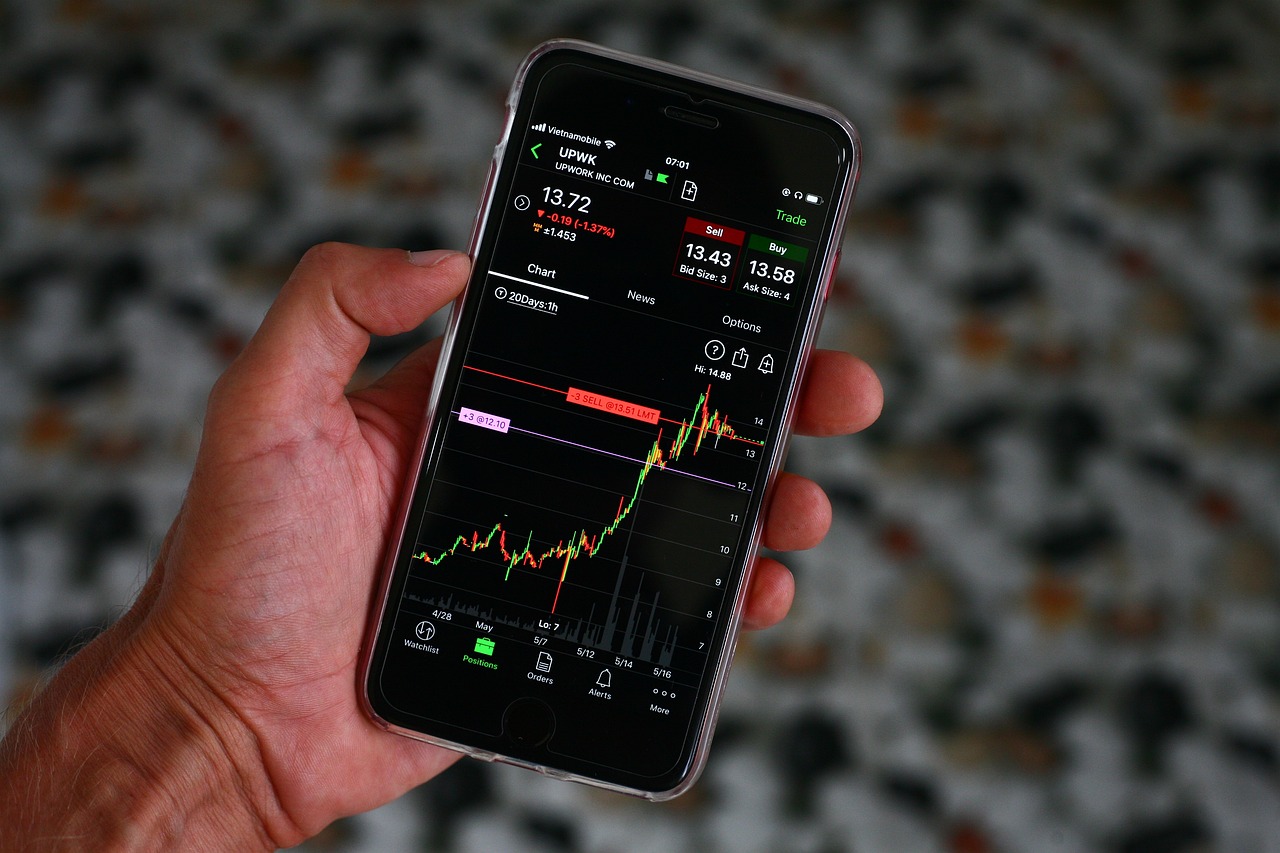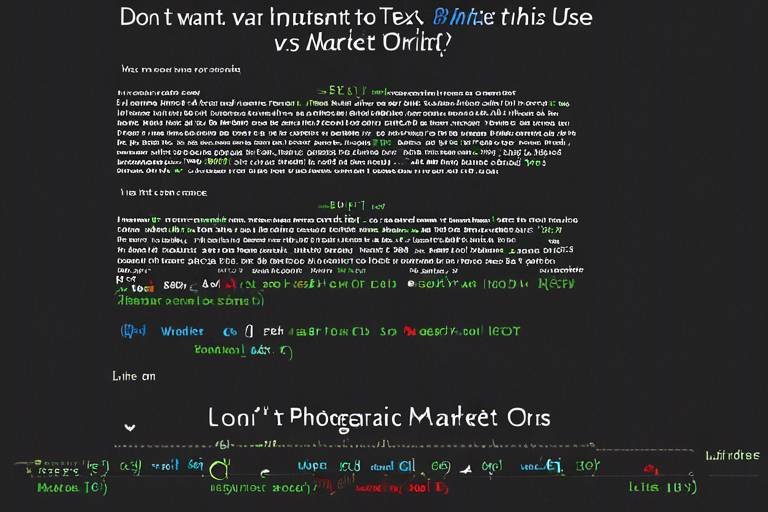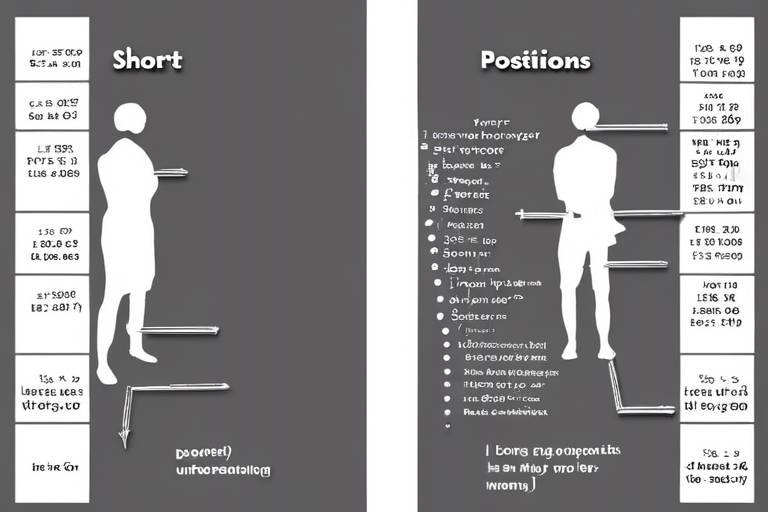Developing an Exit Strategy for Your Trades
In the world of trading, the thrill of the chase often overshadows the importance of having a solid exit strategy. Imagine you're on a rollercoaster, and while the ups and downs are exhilarating, knowing when to get off safely is just as crucial. An exit strategy is your safety harness in the unpredictable ride of the market. It’s not just about when to enter a trade, but also about when to exit, ensuring you maximize profits and minimize losses. Without a well-thought-out exit strategy, you might find yourself clinging on for dear life, hoping the market will turn in your favor. But let's face it, hoping isn’t a strategy!
So, what exactly are exit strategies? In simple terms, they are predefined plans that dictate when a trader will close a position, whether in profit or loss. Think of it as a GPS for your trading journey. Just as you wouldn’t embark on a road trip without knowing your destination, you shouldn’t enter a trade without a clear exit plan. The significance of exit strategies cannot be overstated; they help you navigate the often tumultuous waters of trading by providing a structured approach to managing your positions. By having a clear exit strategy, you can avoid the emotional rollercoaster that often leads to poor decision-making.
When it comes to exit strategies, there’s no one-size-fits-all approach. Traders have various options at their disposal, each with its own set of advantages and disadvantages. Understanding these different types can help you choose the strategy that best aligns with your trading style and goals. Here are some of the most common exit strategies:
Setting profit targets is one of the most straightforward exit strategies. This involves determining a specific price level at which you will exit a position, ideally securing your profits before the market turns against you. Establishing realistic profit targets requires a blend of market analysis and a keen understanding of your trading strategy. For instance, if you believe a stock will rise based on technical indicators, setting a profit target slightly below your expected peak can help ensure you lock in gains. However, be cautious not to set targets that are too ambitious, as this could lead to missed opportunities.
The risk-reward ratio is a critical component when setting profit targets. It’s essentially a measure of how much you stand to gain versus how much you risk losing. A common rule of thumb is to aim for a risk-reward ratio of at least 1:2, meaning for every dollar you risk, you should aim to make two. Calculating this ratio involves analyzing your entry point and your stop-loss level. By understanding and utilizing the risk-reward ratio, you can make informed exit decisions that align with your overall trading strategy.
Trailing stops are another dynamic exit strategy that can help you protect your profits while allowing for potential gains. Unlike traditional stop-loss orders, trailing stops adjust as the market moves in your favor. For example, if you set a trailing stop that follows your trade by a certain percentage, it will lock in profits as the price rises while still giving you room to benefit from further upward movement. This strategy is particularly useful in volatile markets where prices can fluctuate dramatically.
Stop-loss orders are essential for risk management in trading. They act as a safety net, automatically closing your position once it reaches a predetermined price level. Implementing stop-loss orders can significantly limit your losses and preserve your capital during adverse market conditions. It’s crucial to set your stop-loss at a level that reflects your risk tolerance while also considering market volatility. After all, nobody wants to watch their hard-earned money evaporate because they failed to set a stop-loss!
Now that you have a grasp on exit strategies, let’s talk about the often-overlooked aspect of trading: emotional discipline. Maintaining emotional discipline is vital in executing your exit strategy effectively. The psychological aspects of trading can be daunting, especially when the market is fluctuating wildly. It’s easy to get swept up in the excitement of a rising stock or the despair of a falling one. However, staying focused on your strategy is key. Think of it like a game of chess; you need to stick to your plan and not let your emotions dictate your moves.
Regularly reviewing and adjusting your exit strategy is key to long-term success. Just like a fine-tuned machine, your trading strategy needs periodic maintenance. Analyzing past trades can provide invaluable insights, allowing you to refine your future exit strategies for improved performance. Consider keeping a trading journal where you document your trades, the reasoning behind your exit decisions, and the outcomes. This practice can help you identify patterns and make informed adjustments moving forward.
Even the most seasoned traders can fall into the trap of common mistakes when implementing their exit strategies. Some pitfalls to watch out for include:
- Failing to set a stop-loss, leaving you vulnerable to unexpected market shifts.
- Ignoring profit targets, which can result in missed opportunities.
- Letting emotions dictate your exit decisions, leading to impulsive actions.
By being aware of these common mistakes, you can take proactive steps to avoid them and enhance your trading outcomes.
1. What is an exit strategy in trading?
An exit strategy is a predefined plan that dictates when a trader will close a position, either to secure profits or limit losses.
2. Why is it important to have an exit strategy?
Having an exit strategy helps you manage risk, make informed decisions, and avoid emotional trading, ultimately leading to better trading outcomes.
3. What are some common types of exit strategies?
Common exit strategies include profit targets, stop-loss orders, and trailing stops.
4. How can I improve my emotional discipline while trading?
Maintaining emotional discipline can be improved through regular practice, setting clear trading rules, and keeping a trading journal to reflect on your decisions.

Understanding Exit Strategies
When it comes to trading, one of the most crucial aspects that often gets overlooked is the exit strategy. You might be thinking, "Why focus on how to leave a trade when I’m just trying to get in?" Well, imagine you're on a road trip. You wouldn't just drive aimlessly without knowing your destination, right? The same principle applies to trading. An exit strategy is essentially your roadmap, guiding you on when and how to close your positions effectively.
In trading, an exit strategy defines the criteria for closing a position, whether it’s to secure profits or minimize losses. Without a well-thought-out exit plan, traders can find themselves in precarious situations, holding onto losing positions longer than they should or exiting profitable trades too early. It’s like holding onto a balloon too tightly; eventually, if you don’t let go, it might just pop. Understanding exit strategies can significantly enhance your trading performance, allowing you to manage risk more effectively and capitalize on favorable market movements.
There are several aspects to consider when developing your exit strategy. For instance, you need to ask yourself questions like:
- What is my profit target?
- How much loss am I willing to tolerate?
- What market conditions will prompt me to exit?
By answering these questions, you create a framework that helps you navigate the often turbulent waters of trading. Think of it as setting up guardrails on a winding mountain road; they keep you on track and prevent you from veering off into dangerous territory.
Moreover, exit strategies are not just about closing trades; they also play a vital role in your overall trading psychology. Having a plan can reduce the emotional burden of trading decisions. When the market is volatile, and emotions run high, a well-defined exit strategy acts as a safety net, allowing you to stick to your plan rather than making impulsive decisions based on fear or greed.
In conclusion, understanding exit strategies is not merely an option but a necessity for traders aiming for long-term success. It provides clarity and direction, ensuring that you are not just reacting to market movements but proactively managing your trades. So, as you embark on your trading journey, remember that having a solid exit strategy is as important as knowing when to enter the market.

Types of Exit Strategies
When it comes to trading, having a solid exit strategy is like having a life jacket on a boat—you might not need it all the time, but when the waves get rough, you'll be glad you have it. There are several types of exit strategies that traders can employ, each tailored to fit different trading styles and risk tolerances. Understanding these strategies can significantly impact your trading success, helping you to maximize profits while minimizing losses. Let's dive into the most common exit strategies and see how they can work for you!
One of the most straightforward methods is setting profit targets. This involves determining a specific price level at which you plan to exit a trade, ideally when the market is in your favor. Imagine you're fishing; you wouldn't just reel in your line at any random moment. Instead, you’d wait until you feel a strong tug, signaling a catch. Similarly, setting profit targets allows you to capitalize on favorable market conditions. But how do you establish these targets? It often requires a blend of market analysis, historical data, and a pinch of intuition.
Another popular exit strategy is the use of stop-loss orders. Think of stop-loss orders as your safety net. They automatically close your position when the market hits a predetermined price, effectively limiting your losses. This is crucial, especially in volatile markets where prices can swing dramatically. For instance, if you buy a stock at $50 but set a stop-loss at $45, you’re protecting yourself from losing more than $5 per share. It's a simple yet effective way to preserve your capital and keep your trading account afloat.
Then we have the risk-reward ratio, a critical component in setting profit targets. This ratio compares the potential profit of a trade to the potential loss. A common rule of thumb is to aim for a risk-reward ratio of at least 1:2, meaning for every dollar you risk, you aim to make two. This approach not only helps you make informed exit decisions but also allows you to maintain a balanced trading portfolio. To calculate it, simply divide the difference between your entry point and your stop-loss by the difference between your entry point and your profit target. This simple calculation can be a game-changer!
Lastly, let’s talk about trailing stops. These are dynamic exit strategies that adjust as the market moves in your favor. Imagine you're on a roller coaster; as you ascend, you want to keep your hands up and enjoy the ride, but you also want to secure your position for when the ride comes to an end. Trailing stops allow you to lock in profits as the price rises while still giving your trade room to grow. If the price drops, your trailing stop will trigger, closing the position at a profit. It’s like having your cake and eating it too!
Each of these exit strategies has its own set of advantages and disadvantages. While profit targets can maximize gains, they might also cause you to miss out on further potential if the market keeps moving in your favor. Stop-loss orders provide a safety net but can sometimes trigger prematurely in a volatile market. Understanding when to use each strategy is key to becoming a successful trader. So, take your time, experiment, and find what feels right for you!
- What is the best exit strategy for beginners? Beginners may find it beneficial to start with simple profit targets and stop-loss orders to manage risk effectively.
- How do I know when to adjust my exit strategy? Regularly reviewing your trades and market conditions can help you identify when adjustments are necessary.
- Can I combine different exit strategies? Absolutely! Many traders use a combination of profit targets, stop-loss orders, and trailing stops to create a robust exit plan.

Profit Targets
Setting is like having a roadmap on your trading journey. It gives you a clear destination and helps you navigate the often tumultuous waters of the market. When you decide to enter a trade, it’s essential to determine a specific price level at which you will exit and take your profits. This isn’t just a random number; it should be based on thorough market analysis and realistic expectations. Imagine you're on a road trip. You wouldn’t just drive aimlessly; you’d have a destination in mind, right? Profit targets serve that same purpose in trading.
To establish effective profit targets, traders often consider various factors such as historical price action, market trends, and technical indicators. For instance, you might look at previous resistance levels or Fibonacci retracement levels to gauge where the price could potentially reverse. By setting these targets, you not only create a plan for taking profits but also minimize the emotional chaos that can arise when a trade is in profit. Think of it as setting a timer for your favorite dish in the oven; you know exactly when to check it and when to take it out to avoid burning.
When determining your profit targets, it's important to be realistic. Setting targets that are too ambitious can lead to disappointment and missed opportunities. Instead, consider using a risk-reward ratio to guide your target-setting process. This ratio helps you understand how much you stand to gain compared to what you could potentially lose. For instance, if you’re risking $100 on a trade, aiming for a profit of $300 would give you a 3:1 risk-reward ratio. This means for every dollar you risk, you’re looking to gain three. A well-defined risk-reward ratio can help you stay disciplined and focused on your trading strategy.
In addition to setting profit targets, you might also consider implementing a trailing stop. This allows you to adjust your exit point as the market moves in your favor, potentially locking in profits while still giving your trade room to grow. Think of it as a safety net that follows you as you walk a tightrope; it keeps you secure while allowing you to reach new heights.
Ultimately, the key to effective profit targeting lies in combining analysis, realistic expectations, and a solid understanding of your own trading psychology. By having clear profit targets, you empower yourself to make informed decisions, reduce emotional trading, and enhance your overall trading performance.

Risk-Reward Ratio
The is a fundamental concept in trading that helps traders assess the potential profitability of a trade relative to its risk. Simply put, it measures how much you stand to gain versus how much you are willing to lose. Understanding this ratio is crucial for making informed decisions that can significantly impact your trading success.
To calculate the risk-reward ratio, you first need to determine your entry point, your stop-loss level, and your profit target. The formula is straightforward:
| Element | Calculation |
|---|---|
| Risk | Entry Point - Stop-Loss Level |
| Reward | Profit Target - Entry Point |
| Risk-Reward Ratio | Risk / Reward |
For example, if you enter a trade at $50, set your stop-loss at $48, and your profit target at $55, your calculations would look like this:
- Risk: $50 - $48 $2
- Reward: $55 - $50 $5
- Risk-Reward Ratio: $2 / $5 0.4
This means that for every dollar you risk, you stand to gain $2. A ratio of 1:2 or higher is often considered favorable, as it indicates that the potential reward outweighs the risk. However, it's essential to remember that the risk-reward ratio is not a guarantee of success. It simply provides a framework for evaluating trades and helps you maintain a disciplined approach.
Moreover, the risk-reward ratio should be aligned with your overall trading strategy. If you're a day trader, you might be comfortable with a lower ratio, as you plan to make multiple trades throughout the day. On the other hand, swing traders may prefer a higher ratio, aiming for larger price movements over several days or weeks.
In conclusion, mastering the risk-reward ratio can enhance your trading performance by guiding your exit strategies and helping you make calculated decisions. By consistently evaluating this ratio, you can improve your ability to manage risk and optimize your potential profits.

Trailing Stops
In the fast-paced world of trading, serve as a powerful tool for traders aiming to lock in profits while still allowing their positions to run. Imagine you're on a roller coaster ride—while you want to enjoy the thrilling ups, you also want to ensure you don’t fall off at the first dip. Trailing stops function similarly; they help you ride the wave of market movements without getting thrown off course.
A trailing stop is a type of stop-loss order that moves with the market price. Instead of setting a fixed exit point, you define a specific distance (in points or percentage) from the market price. As the price moves in your favor, the trailing stop adjusts accordingly, maintaining that distance. For example, if you set a trailing stop of $1 on a stock currently trading at $50, and the stock rises to $55, your trailing stop would move up to $54. If the stock then drops to $54 or below, your position would be automatically closed, securing your profits.
The beauty of trailing stops lies in their flexibility. They allow traders to benefit from favorable price movements while protecting against sudden downturns. However, it’s essential to set the trailing stop at a level that balances risk and reward. If set too tight, you risk being stopped out prematurely during normal market fluctuations. Conversely, if set too wide, you might give back more profits than you’re comfortable with.
To illustrate this, consider the following table that outlines the potential outcomes of different trailing stop distances:
| Trailing Stop Distance | Outcome |
|---|---|
| $0.50 | May trigger on minor price fluctuations, leading to early exits. |
| $1.00 | Allows for some price movement while locking in profits effectively. |
| $2.00 | Provides significant room for price fluctuations but may risk larger losses. |
Ultimately, the effectiveness of trailing stops hinges on your trading style and the volatility of the asset you’re trading. For instance, if you’re trading high-volatility stocks, a wider trailing stop might be more appropriate to avoid being stopped out unnecessarily. Conversely, in a less volatile market, a tighter trailing stop could help you secure profits more effectively.
In conclusion, implementing trailing stops can be a game-changer for traders looking to maximize their profits while minimizing risk. It’s like having a safety net that adjusts to your success, allowing you to focus on the thrill of the trade without the constant fear of losing what you’ve gained. Just remember to assess your individual strategy and market conditions to find the perfect balance for your trailing stops.

Stop-Loss Orders
When it comes to trading, one of the most important tools in your arsenal is the stop-loss order. Think of it as your safety net, designed to protect your capital when the market takes an unexpected turn. A stop-loss order is essentially a predetermined price point at which you instruct your broker to sell a security, thereby limiting your potential losses. But why is this so crucial? Well, without a stop-loss order, you might find yourself holding onto a losing position, hoping for a miracle that may never come. It's like being on a sinking ship and refusing to use the lifeboat—eventually, you’ll go down with it!
Implementing stop-loss orders can significantly enhance your trading strategy. By setting a stop-loss, you’re not only protecting your investments but also instilling a sense of discipline in your trading approach. This means that even in the heat of the moment, when emotions can cloud your judgment, you have a plan in place that guides your actions. For instance, if you purchase a stock at $100 and set a stop-loss at $90, you’re clearly defining your maximum loss. If the stock price plummets to $90, your broker will automatically sell it, ensuring you don’t lose any more than you’re willing to accept.
However, it’s essential to understand that stop-loss orders are not a one-size-fits-all solution. They come in different types, each serving a unique purpose. Here are a few common types of stop-loss orders:
- Standard Stop-Loss Order: This is the most straightforward type. It triggers a market order to sell when the stock hits the stop price.
- Trailing Stop-Loss Order: This adjusts with the market price. For example, if you set a trailing stop at $5 below the market price, the stop price moves up as the stock price increases, locking in profits.
- Guaranteed Stop-Loss Order: This guarantees that your order will be executed at the specified stop price, regardless of market conditions. However, it typically comes with a higher cost.
It's also worth noting that while stop-loss orders can be a great way to manage risk, they aren't foolproof. In highly volatile markets, a stock can gap down, meaning it opens at a price significantly lower than its previous closing price, potentially resulting in a sale at a much lower price than anticipated. Thus, understanding market conditions and adjusting your stop-loss orders accordingly is vital.
In summary, stop-loss orders are a fundamental aspect of risk management in trading. They help you maintain control over your investments and prevent emotional decision-making. By incorporating stop-loss orders into your trading strategy, you can navigate the unpredictable waters of the market with greater confidence and security.
1. What is a stop-loss order?
A stop-loss order is an instruction to sell a security when it reaches a specific price, helping to limit potential losses.
2. How do I set a stop-loss order?
You can set a stop-loss order through your brokerage platform by specifying the stock and the price at which you want to sell.
3. Are stop-loss orders guaranteed?
Not always. Standard stop-loss orders may not execute at the exact stop price in volatile markets, while guaranteed stop-loss orders do offer that assurance, albeit at a cost.
4. Can I adjust my stop-loss order?
Yes, you can modify your stop-loss order at any time before it is triggered, allowing you to adapt to changing market conditions.
5. Should I always use stop-loss orders?
While they are highly recommended for managing risk, the decision to use them should be based on your trading strategy and risk tolerance.

Emotional Discipline
When it comes to trading, one of the most underrated yet crucial components is . Think about it: in the heat of the moment, when the market is swinging wildly, how often do traders stick to their meticulously crafted plans? The answer is often, not enough. Emotional discipline is the ability to stay calm and collected, even when your instincts scream to act. It’s like being a captain of a ship during a storm—you need to navigate through the chaos without losing sight of your destination.
Imagine you're in a trade that’s going against you. Your heart races, your palms sweat, and you start questioning your strategy. This is where emotional discipline comes into play. It’s about recognizing those feelings and not allowing them to dictate your actions. You must remind yourself of your exit strategy and the reasons behind your initial trade decision. By doing so, you can avoid making impulsive choices that could lead to significant losses.
Moreover, emotional discipline helps you to maintain a long-term perspective. Trading is not just about one or two trades; it’s a marathon, not a sprint. Successful traders understand that they will have both winning and losing trades. Instead of focusing solely on immediate outcomes, they concentrate on their overall performance. This mindset allows them to withstand short-term volatility without panicking. It’s like planting a tree; you won’t see the fruit overnight, but with patience and care, it will eventually yield results.
To cultivate emotional discipline, consider the following strategies:
- Set Clear Goals: Define what you want to achieve in your trading journey. Are you looking for quick profits, or are you building a long-term portfolio? Having clear objectives can guide your decision-making process.
- Practice Mindfulness: Engage in mindfulness techniques such as meditation or deep breathing exercises. These practices can help you remain centered, especially during market turbulence.
- Keep a Trading Journal: Document your trades, including your emotions at the time. This will help you identify patterns in your behavior and make adjustments as needed.
- Limit Exposure: Avoid over-leveraging your positions. The less you have at stake, the easier it is to remain calm during fluctuations.
In essence, emotional discipline is the bedrock of a successful trading strategy. It’s not just about knowing when to enter or exit a trade; it’s about managing your psyche amid the unpredictable nature of the markets. By mastering your emotions, you empower yourself to make rational decisions that align with your trading plan, ultimately leading to better outcomes.

Reviewing and Adjusting Your Strategy
When it comes to trading, the market is as unpredictable as a roller coaster ride. One moment you’re soaring high, and the next, you’re plummeting down. That’s why reviewing and adjusting your exit strategy is not just a good idea; it’s essential for long-term success. Think of your trading strategy as a living organism; it needs to evolve and adapt to survive in the ever-changing market landscape.
Regularly evaluating your exit strategy allows you to identify what works and what doesn’t. It’s like checking the oil in your car; if you neglect it, your vehicle might break down at the most inconvenient time. By analyzing your past trades, you can pinpoint patterns, understand your emotional responses, and refine your approach. This process not only helps in maximizing profits but also in minimizing losses.
So, how do you go about this review? Start by keeping a trading journal. Document each trade, including your entry and exit points, the rationale behind your decisions, and the outcome. This record will serve as a valuable resource when you sit down to analyze your performance. You can categorize your trades based on different strategies, market conditions, or even your emotional state at the time of trading. This way, you can easily spot trends and areas for improvement.
Additionally, consider setting a regular schedule for reviews. Whether it’s weekly, monthly, or quarterly, having a routine helps keep you accountable. During these reviews, ask yourself the following questions:
- Did I stick to my exit strategy?
- What were the outcomes of my trades?
- Were there any emotional triggers that affected my decisions?
- What adjustments can I make to improve my strategy?
Once you’ve gathered insights from your reviews, it’s time to adjust your strategy. This could mean tweaking your profit targets, modifying your risk-reward ratio, or even implementing new exit techniques like trailing stops. Remember, the goal is to create a strategy that aligns with your trading style and risk tolerance. Don’t be afraid to experiment; sometimes, the best adjustments come from trying something new.
Lastly, keep in mind that the market is constantly evolving. Economic events, news releases, and even changes in trading technology can impact your strategy’s effectiveness. Therefore, staying informed about market trends and continuously educating yourself will empower you to make informed adjustments. In trading, staying static is a recipe for disaster; adaptability is key.
Q: How often should I review my trading strategy?
A: It’s recommended to review your trading strategy at least once a month, but more frequent reviews can be beneficial, especially after significant market events or changes in your trading performance.
Q: What should I include in my trading journal?
A: Your trading journal should include details such as the date of the trade, entry and exit points, the reason for entering the trade, the outcome, and any emotional notes you think are relevant.
Q: Can I change my exit strategy mid-trade?
A: While it’s generally advisable to stick to your plan, if you find that market conditions have changed significantly, it may be appropriate to adjust your exit strategy. Just ensure that any changes are based on sound reasoning rather than emotional impulses.
Q: What if my adjustments don’t lead to improved performance?
A: If your adjustments don’t yield better results, revisit your analysis. It may be necessary to go back to the drawing board or seek advice from more experienced traders. Continuous learning is a part of the trading journey.

Common Mistakes to Avoid
When it comes to trading, having an exit strategy is just as important as knowing when to enter a position. However, many traders often stumble into common pitfalls that can undermine their efforts and lead to unnecessary losses. One of the biggest mistakes is failing to set clear exit points. Imagine driving without a destination; you might end up lost or going in circles. Similarly, without defined exit points, traders can find themselves in a state of confusion, unsure of when to sell and potentially missing out on profits.
Another frequent error is letting emotions dictate trading decisions. Trading can be a rollercoaster of highs and lows, and it’s easy to get caught up in the thrill of a winning trade or the despair of a losing one. Emotional trading can lead to impulsive decisions, such as holding onto a losing position in hopes that it will bounce back or exiting a winning trade too early due to fear. To combat this, traders should develop a disciplined approach, adhering strictly to their predetermined exit strategy. After all, sticking to your plan is like following a map; it keeps you on the right path.
Moreover, many traders neglect the importance of regularly reviewing their exit strategies. Trading is not a set-it-and-forget-it endeavor; the market is constantly evolving, and what worked yesterday may not work today. By failing to analyze past trades, traders miss out on valuable insights that could enhance their future performance. It's akin to a sports team that doesn't review game footage; without reflection, improvement is nearly impossible.
Additionally, some traders underestimate the significance of the risk-reward ratio. This ratio helps traders assess the potential profit of a trade in relation to its potential loss. Ignoring this crucial metric can lead to disproportionate risk-taking, where the potential for loss outweighs the chance of gain. For example, if a trader risks $100 to make $50, they’re setting themselves up for failure. A good rule of thumb is to aim for a risk-reward ratio of at least 1:2, meaning for every dollar risked, there should be a potential reward of two dollars.
Lastly, one of the most detrimental mistakes is the failure to use stop-loss orders effectively. Stop-loss orders are designed to limit losses by automatically closing a position at a predetermined price. However, some traders either set them too close, leading to premature exits, or too far, exposing themselves to larger losses. It's crucial to find the right balance when placing stop-loss orders, ensuring they provide adequate protection without hindering the potential for profit. Remember, a well-placed stop-loss is like a safety net; it protects you from falling too far.
To avoid these common mistakes, traders should:
- Set clear exit points before entering a trade.
- Maintain emotional discipline and stick to the plan.
- Regularly review and adjust exit strategies based on past trades.
- Understand and utilize the risk-reward ratio effectively.
- Use stop-loss orders wisely to protect capital.
By being aware of these pitfalls and actively working to avoid them, traders can significantly improve their chances of success in the dynamic world of trading.
Q: What is an exit strategy in trading?
A: An exit strategy is a predetermined plan for closing a trade, designed to maximize profits and minimize losses.
Q: Why is emotional discipline important in trading?
A: Emotional discipline helps traders stick to their strategies, preventing impulsive decisions that can lead to losses.
Q: How often should I review my exit strategy?
A: It's advisable to review your exit strategy regularly, ideally after each trading session or week, to ensure it remains effective in changing market conditions.
Q: What is a risk-reward ratio?
A: The risk-reward ratio compares the potential profit of a trade to its potential loss, helping traders make informed decisions.
Q: How do stop-loss orders work?
A: Stop-loss orders automatically close a position when the price reaches a certain level, helping to limit potential losses.
Frequently Asked Questions
- What is an exit strategy in trading?
An exit strategy in trading refers to a predefined plan that outlines when and how a trader will close their position. It is essential because it helps traders manage their trades effectively, maximizing profits while minimizing losses. Without a solid exit strategy, traders may find themselves making impulsive decisions based on emotions rather than logic.
- Why are exit strategies important?
Exit strategies are crucial because they provide a framework for decision-making during trades. They help traders set clear profit targets and loss limits, which can prevent emotional trading and enhance overall performance. By having an exit strategy, traders are more likely to stick to their plans and avoid costly mistakes.
- What are the different types of exit strategies?
There are several types of exit strategies, including profit targets, stop-loss orders, and trailing stops. Each strategy has its own pros and cons, and traders can choose the one that aligns best with their trading style and risk tolerance. Understanding these strategies is key to effectively managing trades.
- How do I set a profit target?
Setting a profit target involves analyzing market conditions and determining a specific price level at which you plan to exit a trade. It's important to be realistic and base your target on thorough market analysis, considering factors like volatility and historical price movements.
- What is a stop-loss order?
A stop-loss order is a risk management tool that automatically closes a trade when the price reaches a predetermined level. This helps traders limit their losses and protect their capital during unfavorable market conditions. Implementing stop-loss orders is a fundamental practice for successful trading.
- How can I maintain emotional discipline while trading?
Maintaining emotional discipline requires a strong commitment to your trading strategy. Traders can achieve this by sticking to their exit plans, avoiding impulsive decisions, and regularly reviewing their performance. Remember, trading is as much about psychology as it is about strategy!
- How often should I review my exit strategy?
It's advisable to review your exit strategy regularly, ideally after each trade or at the end of a trading week. This allows you to analyze your past trades, identify patterns, and make necessary adjustments to improve your strategy for future trades.
- What common mistakes should I avoid with exit strategies?
Some common mistakes include not setting clear exit points, letting emotions dictate decisions, and failing to adjust strategies based on market changes. By being aware of these pitfalls, traders can better navigate their trading journey and enhance their overall success.



















